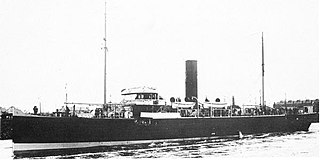
Q-ships, also known as Q-boats, decoy vessels, special service ships, or mystery ships, were heavily armed merchant ships with concealed weaponry, designed to lure submarines into making surface attacks. This gave Q-ships the chance to open fire and sink them.

A depth charge is an anti-submarine warfare (ASW) weapon designed to destroy submarines by detonating in the water near the target and subjecting it to a destructive hydraulic shock. Most depth charges use high explosives with a fuze set to detonate the charge, typically at a specific depth from the surface. Depth charges can be dropped by ships, patrol aircraft and helicopters.

Seiner Majestät UB-4 was a German Type UB I submarine (U-boat) in the German Imperial Navy during World War I. She was sunk by a British Q-ship disguised as a fishing smack in August 1915.
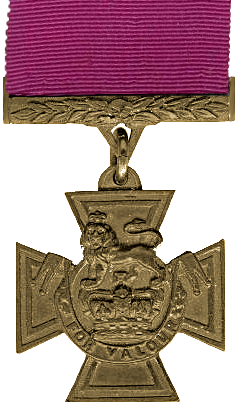
Commander Harold Auten was a Royal Naval Reserve (RNR) officer who was awarded the Victoria Cross, the highest award for gallantry in the face of the enemy that can be awarded to British and Commonwealth forces. He received his medal for an action during the English Channel campaign of the First World War.

William Williams VC, DSM & Bar, was a Welsh recipient of the Victoria Cross, the highest and most prestigious award for gallantry in the face of the enemy that can be awarded to a member of the British and Commonwealth armed forces.
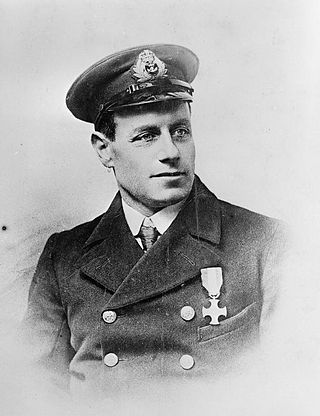
Thomas Crisp VC, DSC, RNR was an English sailor and posthumous recipient of the Victoria Cross. Crisp, in civilian life a commercial fisherman operating from Lowestoft in Suffolk, earned his award after being killed during the defence of his vessel, the armed naval smack Nelson, in the North Sea against an attack from a German submarine in 1917.

Chief Petty Officer Ernest Herbert Pitcher was a Royal Navy (RN) sailor and an English recipient of the Victoria Cross (VC), the highest award for gallantry in the face of the enemy that can be awarded to British and Commonwealth forces.
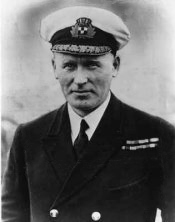
Ronald Niel Stuart, VC, DSO, RD, RNR was a British Merchant Navy commodore and Royal Navy captain who was highly commended following extensive and distinguished service at sea over a period of more than thirty-five years. During World War I he was awarded the Victoria Cross, the Distinguished Service Order, the French Croix de Guerre avec Palmes and the United States' Navy Cross for a series of daring operations he conducted while serving in the Royal Navy against the German U-boat campaign in the Atlantic.
SM U-68 was a Type U 66 submarine or U-boat for the German Imperial Navy during the First World War. She had been laid down in December 1913 as U-9 of the U-7 class for the Austro-Hungarian Navy but was sold to Germany, along with the others in her class, in November 1914. Under German control, the class became known as the U 66 type and the boats were renumbered; U-9 became U-68, and was redesigned and reconstructed to German specifications. She was launched in June 1915 and commissioned in August.

The First Ostend Raid was the first of two attacks by the Royal Navy on the German-held port of Ostend during the late spring of 1918 during the First World War. Ostend was attacked in conjunction with the neighbouring harbour of Zeebrugge on 23 April in order to block the vital strategic port of Bruges, situated 6 mi inland and ideally sited to conduct raiding operations on the British coastline and shipping lanes. Bruges and its satellite ports were a vital part of the German plans in their war on Allied commerce (Handelskrieg) because Bruges was close to the troopship lanes across the English Channel and allowed much quicker access to the Western Approaches for the U-boat fleet than their bases in Germany.
His Majesty's or HM Armed Smack Inverlyon was a fishing smack that was converted to a Q-ship during the First World War. Q-ships served as decoys to lure German submarines near enough so that concealed weapons could be brought to bear and sink the submarines. On 15 August 1915, Inverlyon succeeded in luring German submarine UB-4 within range and sinking her with nine shots from her gun. The Royal Navy Gunner in command of the vessel, Ernest Martin Jehan, received the Distinguished Service Cross and members of Inverlyon's crew shared the bounty offered for German submarines. After Inverlyon's Q-ship career ended, she returned to fishing, but was sunk by U-55 on 1 February 1917.

The Atlantic U-boat campaign of World War I was the prolonged naval conflict between German submarines and the Allied navies in Atlantic waters—the seas around the British Isles, the North Sea and the coast of France.

The German Type IXA submarine was a sub-class of the German Type IX submarine built for Nazi Germany's Kriegsmarine between 1937 and 1938. These U-boats were designed between 1935 and 1936 and were intended to be fairly large ocean-going submarines. The inspiration for the Type IXA submarine came from the German Type IA submarine, which had a similar diving depth and identical submerged horsepower.

SMS Leopard was a British cargo steamship that was built in 1912 as Yarrowdale, captured in 1916 by the Imperial German Navy, converted into a commerce raider in Germany, and sunk with all hands by the Royal Navy in 1917.
Armed trawler Nelson was a British auxiliary warship which served during World War I. She was built in 1905 as the fishing smack G&E, operating from Lowestoft and registered as LT 649. In 1915 she was armed for defence against U-boat attack, and fought several actions against them. She was sunk in action on 15 August 1917. This action was fought between a German U-boat and two trawlers, Nelson and Ethel & Millie, off the English coast.
HMS Penshurst was a Royal Navy warship that was active during World War I. She was a Special Service Vessel whose function was to act as a decoy, inviting attack by a U-boat in order to engage and destroy it. Penshurst fought a number of engagements against German U-boats during her service, and was successful on two occasions, destroying UB-19 in November 1916, and UB-37 in January 1917. Penshurst was sunk following an action with U-110 in December 1917.
HMS Pargust was a Royal Navy warship that was active during World War I. She was a Special Service Vessel used by the RN in anti-submarine warfare. Pargust was active in this role during the last two years of the war, and was successful on one occasion, destroying the U-boat UC-29.

United States Navy operations during World War I began on April 6, 1917, after the formal declaration of war on the German Empire. The United States Navy focused on countering enemy U-boats in the Atlantic Ocean and the Mediterranean Sea while convoying men and supplies to France and Italy. Because of United States's late entry into the war, her capital ships never engaged the German fleet and few decisive submarine actions occurred.

Result is a three-masted cargo schooner built in Carrickfergus in 1893. She was a working ship until 1967, and served for a short time in the Royal Navy as a Q-ship during World War I. She currently rests on land at the Ulster Folk and Transport Museum, and in 1996 was added to the National Register of Historic Vessels.
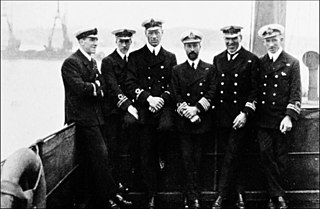
Captain Cedric Naylor was a Royal Navy officer of the First and Second World Wars. Naylor was a merchant seaman before joining the Royal Naval Reserve on the outbreak of the First World War. In November 1915 he was posted as first lieutenant to HMS Penshurst, a Q-ship, a warship disguised as a merchant vessel intended to fool German U-boats into surfacing so they could be sunk. Naylor received the Distinguished Service Cross for his part in the sinking of SM UB-19 on 30 November 1916 and a bar for further operations in February and March 1917. Naylor was granted temporary command of Penshurst after its captain was incapacitated in June and the next month damaged a submarine, for which he was awarded the Distinguished Service Order. Further distinguished service in the following months saw him receive a bar to the medal and a transfer to the Royal Navy. Naylor was hunting for SM U-110 on Christmas Eve 1917 and Penshurst was struck by a torpedo fired by the submarine. Despite suffering heavy damage Naylor remained onboard with two gun crews, hoping the U-boat would surface to finish off the ship. When U-110 surfaced it was hit twice and damaged before Penshurst sank. Naylor survived and was awarded a second bar to his DSO. He commanded the sloop Polyanthus for the remainder of the war.














